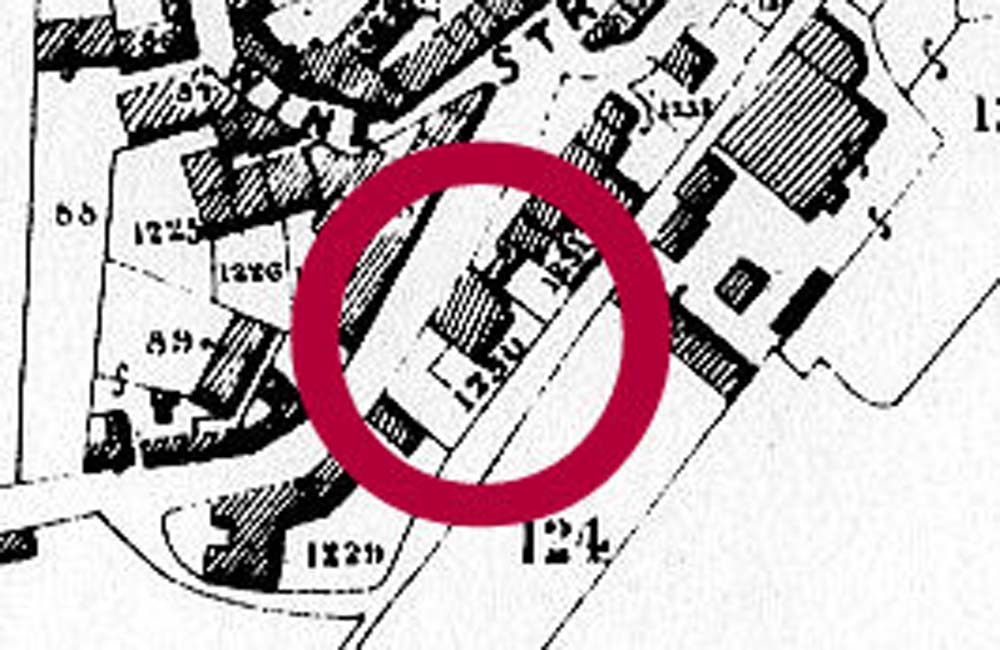Barton Cottage, Barton Orchard, Bradford on Avon
Click on images or Bradford on Avon Home to return back.
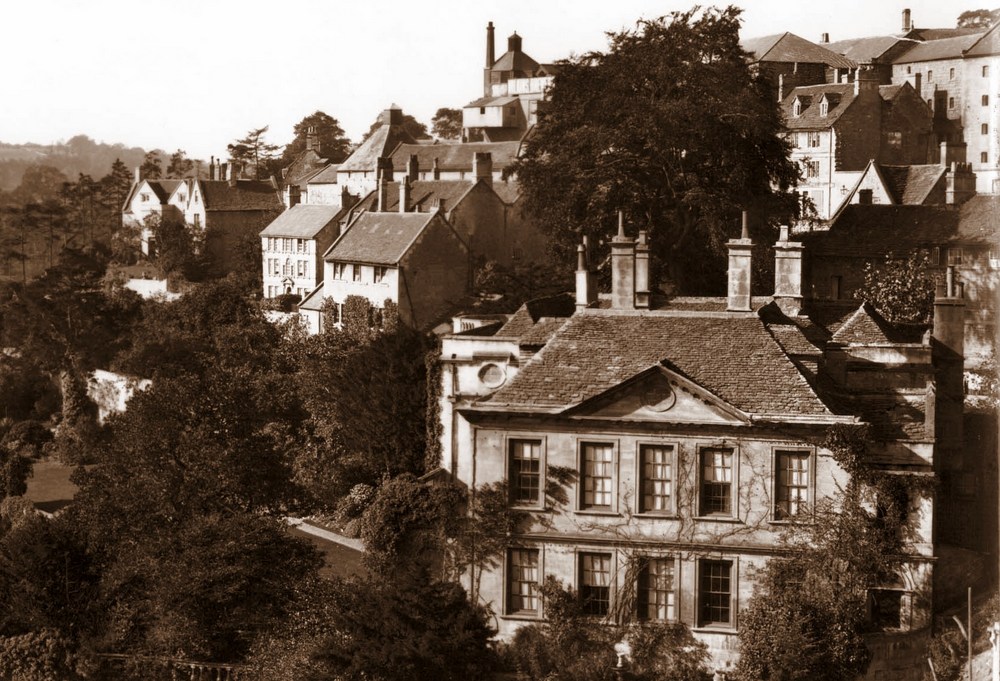
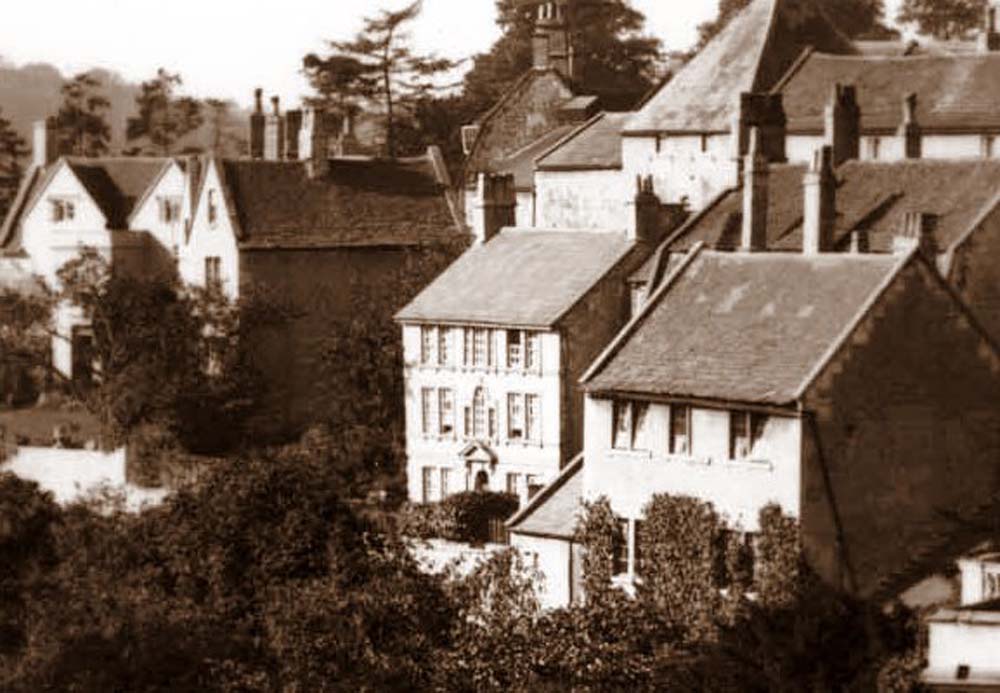
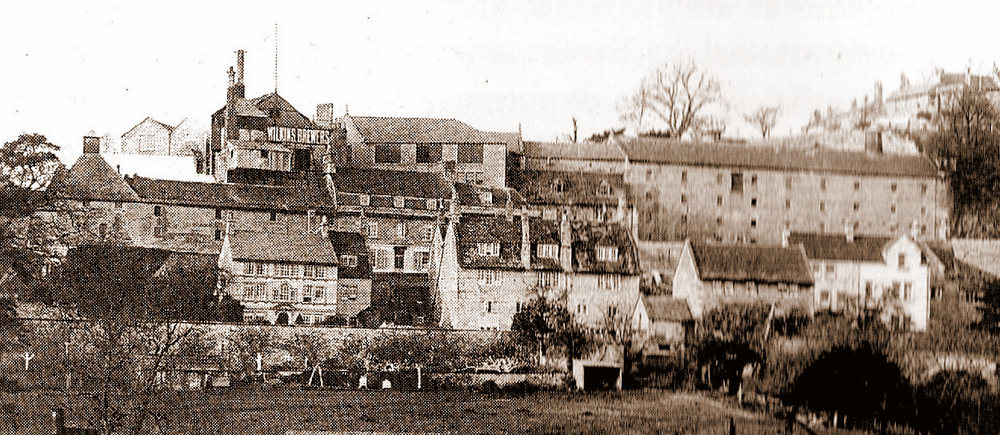

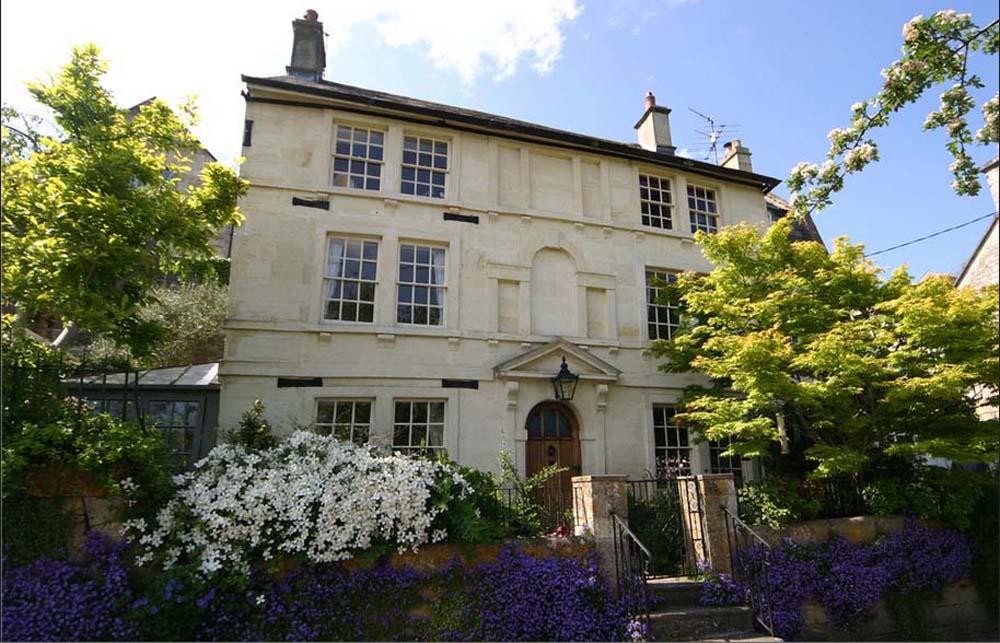
1st and 2nd October 1783 Lease and release.
‘Lease' Noah Alloway of Bradford malster (1) to John Marshman of Bradford, victualler (2). Sale of all that new erected messuage or dwelling house together with the outhouses, garden and appurtenances thereto adjoining now in the occupation of Mr Richard Wilshere as tenant and all those two new erected cottages adjoining to the said messuage now in the occupations of - Lanny and James Cottle as tenants thereof and also all that new erected stable adjoining to the said cottages now in the possession of the said Noah Alloway in Newtown, Bradford. All which said premises were erected and built by the said Noah Alloway in the room of a tenement or dwelling house formerly in the occupation of the widow Hinton. Together with the use of the well or spring of water and of the pump now therein standing near or adjoining to the malt house of the said Noah Alloway in common with the tenants or occupiers of the same malt house and also free liberty of ingress, egress and regress at all times therefrom and thereto. John Marshman to pay one half of the costs of keeping the said well and pump in repair. All the premises were formerly purchased (amongst other things) by Noah Alloway from Paul Methuen Esq. of Corsham by indenture of lease and release dated 30th and 31st October 1770. Winesses Daniel Clutterbuck and Thomas Carter.
Release. Indenture tripartite. Noah Alloway and Grace his wife (1) Daniel Wyatt of Jaggards, Corsham yeoman (2) to John Marshman of Bradford, victualler (3). Refers to deed of demise and mortgage (bargain and sale) of 10th June 1771 between Alloway and Wyatt of (amongst other things) all that tenement or dwelling house and garden thereto adjoining and [in the occupation of?] the widow Hinton, having the road leading from Bradford to Belcomb Brook on the north side, a ground called Barton Orchard south and a garden of John Milsom west, which said dwelling house was held by widow Hinton for the remainder of a term of 99 years, formerly granted by Anthony Methuen deceased to Robert Deverell by a deed dated 18th August 1703 to commence from the death of Jane, wife of Tobias Kent, and which same premises (together with a void piece of ground thereto adjoining) subject to the said lease, the said Noah Alloway had lately purchased from Paul Methuen of Corsham. Conveyed in 1771 to Wyatt for term of 1000 years for £230 mortgage. Further deed of mortgage 26th October 1772 reciting that Noah Alloway had borrowed from Wyatt a further sum of £100, Alloway made liable the dwelling house and garden (amongst other things). Noah Alloway sometime since pulled down the tenement or dwelling house and erected a dwelling house, two cottages and a stable on part of the said premises. John Marshman has agreed to buy the property for £250.
Noah Alloway and Daniel Wyatt sign. Grace Alloway makes her mark.
Final agreement, Marshman/Alloway
2nd and 3rd May 1800 Indentures of lease and release
John Beverstock of Bradford, victualler to James Howell of Bradford, clothier for sale of the property (as described in 1783). The house now occupied by Mrs Martha Wiltshire as tenant, the two cottages now occupied by William Fanney and Joseph Smith as tenants, the stable and yard in the occupation of Joseph Smith but now in the possession of William Heal as tenant to Beverstock. Also the small piece of ground on the west side of the messuage and court occupied by Mrs Wiltshire in length 16V2 feet and breadth 4'A feet. Rights of passage to stable from Newtown (see deed below) and of footway from the stable down the steps to the other part of the premises and use of well and pump paying one third of repair costs. Witnesses Daniel Clutterbuck and Edward Luxford.
Release of 4 parts;
Anthony Guy of Chippenham, gent., John Edwards of Hartham, Corsham, yeoman and James Powell of Lypeatt, Corsham, yeoman named in the will of John Melsom late of Westrop, Corsham, gent, deceased (1) John Beverstock of Bradford, victualler and Ann his wife (2) James Howell of Bradford, clothier (3) Thomas Bush of Bradford Esquire (4). Refers to an indenture of mortgage dated 29th Sept. 1790 between John Beverstock and Daniel Clutterbuck (...unreadable) (1) and John Manley of Pickwick, Corsham and Michael Ford the younger of Pickwick malster, executors of the will of William Sidnell, late of Pickwick, cloth worker, deceased (2). Property conveyed in return for a loan of £500 by Sidnell to Beverstock. Refers also to an indenture of assignment tripartite of 1796 between Beverstock (1) Michael Ford the younger the surviving executor of Sidnell (2) and Hannah Guy of Chippenham, widow (3). Michael Ford wanted repayment, Beverstock repaid £200 and applied to Hannah Guy for the other £300. Property assigned to Guy. Hannah Guy died and her executors asked for repayment. 30th Sept. 1797 the mortgage was assigned to John Melsom. 31st July 1798 Melsom had not been repaid and there was a small arrear of interest. He lent a further £100 on bond to Beverstock. Melsom died. In his will (proved Arch. Sarum) he appointed Anthony Guy, John Edwards and James Powell his executors. £400 was still owing, all interest having been paid. The property was therefore conveyed by the present deed by Beverstock to James Howell for £200 to the mortgagees and £100 to Beverstock. John Marshman had died. Bush provided a mortgage to Howell and the property was granted to him for 500 years in trust to attend the inheritance in consideration of 10/= paid to Guy, Edwards and Powell by Bush.
All parties sign their names well. Witnesses Daniel Clutterbuck, Edward Luxford and William Rugg of Chippenham.
Final agreement 1800 James Howell/John Beverstock
16.6.1841 Marriage Settlement
on the intended marriage of William Howell, late of Bradford but now of the city of Bristol, chemist with Miss Sophia Smart of Bradford. Parties; William Howell (1), Sophia Smart (2), Thomas Smart, grocer and William Merrick, gent both of Bradford (3). William Howell is entitled in fee simple to the messuage, cottages and hereditaments hereby granted. The deed conveys them in trust to uses. Howell sells to Thomas Smart and William Merrick ‘all that Messuage or Dwelling House together with the Outhouses Garden and Appurtenances thereto adjoining ...situate ...at a place call[ed] Newtown in the parish of Bradford ...heretofore in the Occupation of Richard Wiltshire and now or late of Edward Wilton Gentleman and also all those two Cottages or Tenements on the West side of and adjoining to the said Messuage ... heretofore in the occupation of - Lanney and James Cottle then of William Fanney and Joseph Smith and now or late of - Batchellor and - Jones and also all that stable yard situate and being under the said cottage ... formerly in the occupation of the said Joseph Smith and which stable and yard was formerly in the possession of William Heal but are now unoccupied and also all that small piece of ground lying ... on the West side of the Messuage and Court formerly occupied by Mrs Wiltshire and which contains in length sixteen feet and a half and in breadth four feet and a half, Together also with free way and passage to and for the said Thomas Smart and William Merrick ... for ever hereafter at all times and seasons with carts, horses, carriages or otherwise from the street in Newtown ... to and as far as the said stable through the court or yards as the same way and passage are now used and also a footway from the said stable down the steps to the other part of the said premises now released and also the free use of and access at all times and seasons to the well of water and the pump thereon erected standing and being on other Premises formerly belonging to John Baverstock and in the occupation of William Hale to and for ... Thomas Smart and William Merrick ... and the occupiers and tenants ... of the said premises hereby released, they the said [Smart and Merrick ...] paying one third of the expence of keeping and supporting the said pump well and pipes in proper repair, all of which premises are bounded by the said town called Newtown on the North and the footpath through Barton Orchard on the south side thereof.' All this property conveyed to the trustees to the use of William Howell before the marriage and after the marriage to be to the use of Sophia Smart for the term of her natural life to receive the rents and profits of the said premises, then after her death to the use of William Howell for his natural life. After the death of the couple to the use of any children of them or if no children to the heirs of William Howell. Right to lease the property for up to 21 years.
Witnesses; Emma Mundy of the City of Bristol, spinster and Daniel Smart of Bradford, grocer.
29th Sept. 1862 Indenture.
Conveyance William Merrick of Bradford, gentleman with the consent of Mr and Mrs Howell to Mr James Hayes. Parties; Wm Merrick (1), William Howell of the city of Bristol, chemist and Sophia his wife (2), James Hayes of Bradford gentleman (3) and George Marks of Bradford, chemist (4). Refers to the marriage settlement. Thomas Smart died 1844 leaving William Merrick as the sole trustee. William Howell under provisions of marriage settlement contracted to sell the property to James Hayes for £200. Now sells it for £500. The description of the property is as in the marriage settlement except the free passage to the stable and use of the well and pump is for James Hayes. George Marks is trustee. The widow of James Hayes will be entitled to dower of the estate.
Witnesses; Skreen White of Bradford, grocer and Robert Merrick of the same place, gentleman.
1881 Mr Thomas Newell
of Upper Howsell, Worcs., carpenter and joiner and Mr Thomas Hayes of Great Malvern, Worcs. carpenter and joiner (1., the vendors), Ellen Hayes of Stourbridge, Worcs., widow (2) to Mr John Silby of Bradford, boot maker (3., the purchaser). Draft agreement (undated and unsigned) for sale of a dwellinghouse and premises called Bartons Cottage at Bradford. Ellen Hayes gives consent for sale. For £190. Purchase to be completed on 8th November at Malvern. Title to commence with indenture of 1862. Vendors being trustees. Dwellinghouse now in the occupation of A.R.Dunn, two cottages now thrown together forming one cottage now in the occupation of - Norris, stable and yard now unoccupied, accesses and use of well and pump as before.
Further notes on the property from other sources
Deed of 7th March 1698 in the Methuen Papers
at Wiltshire and Swindon Record Office. Lease by Anthony Methuen to Robert Deverell of Bradford, broadweaver, son of John Deverell, clothworker, of a cottage and garden in Newtown adjacent to a close called Barton Orchard on the south and a tenement of William Poole on the east, occupied by Tobias Kent (step-father of Deverell). Methuen reserves 70' in length and full breadth ranging from the garden of James Webb, now in the possession of - Broderipp along between Barton Orchard and the highway adjacent to Robert Lacy's tenement towards the said cottage granted.
Extract from John Marshman's will made 8.12.1784:
‘I bequeath all that my freehold estate of three houses ... with all garden ground which I lately purchased of Noah Alloway maltster situate and being near his malthouse and dwelling house in Bradford unto my son-in-law John Bevestock of Bradford joiner and cabinet maker'. (Information from Roger Mawby.)
1841 Tithe Map
The property is plot 1230 on the 1841 tithe award. House and two tenements, owned by James Howell.
1841 census
end of Barton Orchard section 1 house unoccupied, next household Sarah Jones aged 58 wool picker, bom Bradford and James Wilkins aged 26, weaver, bom Bradford next household Sarah Merrick aged 30, Ellen Merrick, governess, Sophia Merrick aged 21, governess, Kate Watkins aged 10 pupil. Then Wellclose starts. (Information from Roger Mawby.)
1871 census
Barton Orchard. Household 48 Barton Cottage Joseph Ralph aged 50 and his wife Elizabeth 44. He was a baker, bom at West Kington. (Information from Roger Mawby.)
Brief outline of the descent of the property from all sources
1698 Cottage and garden, owner Anthony Methuen, lease to Robert Deverell, broad weaver, occupier Tobias Kent
1703 Owner Anthony Methuen, lease to Robert Deverell after death of Jane Kent 1770 Conveyance Paul Methuen to Noah Alloway, maltster, occupier widow Hinton
1772-1783 Rebuilding as house, 2 cottages and stable
1783 Conveyance Noah Alloway to John Marshman, victualler, occupier Richard Wiltshire, cottages - Lanney and James Cottle
John Marshman died, will 1784 had left 3 houses to John Beverstock.
1790 Owner John Beverstock, victualler
1800 Conveyance John Beverstock to James Howell, clothier, occupier Mrs Martha Wiltshire,
cottages William Fanney and Joseph Smith
1841 (TA.) House and two tenements. Owner James Howell.
1841 Census, possibly occupiers of one house [1230?] Sarah Jones with James Wilkins lodger and of another [1230? or 1229?] Sarah Merrick, her two governess sisters? and a pupil 1841 Marriage settlement, owner William Howell of Bristol, chemist, conveyed to use of intended wife Sophia Smart, occupier Edward Wilton esq., cottages - Batchellor and - Jones.
1862 Conveyance trustees of Howells to James Hayes 1871 Census, occupier Joseph Ralph, baker and wife Elizabeth
1881 Draft sale agreement Hayes family trustees to John Silby, boot maker, occupier A.R. Dunn, cottages now in one occupation - Norris. House called Bartons Cottage.Site and history
The house faces southeast (taken as south in this report) on sloping ground between Newtown and Barton Orchard. Ashmead's map of 1837 shows it in the Winsley tithing of Bradford-on-Avon. It is therefore likely that it was part of the Budbury estate, the principal house of which was Budbury Farm (now 4 Budbury Place) on top of the hill and which included the St. Mary Tory chapel, and cottages which were on the site of Newtown Brewery. In 1578 the chapel, referred to as the Hermitage, included several cottages on or below the hillside.
The earliest documentary reference specifically to 3 Barton Orchard is a lease of 1698 by Anthony Methuen to Robert Deverell, broad weaver, the occupant being Tobias Kent. Anthony Methuen held the Rogers sub-manor of Bradford-on-Avon based at the house now called The Priory and his family had acquired the Budbury estate in 1661. Jane Kent, probably the widow of Tobias, occupied the house for a few years after her husband's death but she died in 1703.
In 1770 the house was sold away from the Rogers manor and bought by Noah Alloway, a maltster. The occupier at the time was widow Hinton. Between 1772 and 1783 the cottage was largely demolished and rebuilt by Alloway as a house, two cottages and a stable and it was then sold, with Richard Wiltshire as tenant in the main house and two tenants in the adjoining cottages, to John Marshman, a victualler. Richard Wiltshire Esq. is named amongst the ‘Gentry etc.' at Bradford in the Universal Directory of 1793-8. (See summary of the deeds etc. for a more detailed history.)
Exterior
The east and west end walls of the house incorporate older, lower gable ends constructed of roughly squared rubble stone in large blocks (photographs F1468.5 and F1468.4). The front of the house was refaced when the house was altered between 1772 and 1783 (F1468.2). There is a staff moulding around the front doorway.
The front wall is about 24in thick. The rear wall appears to be 34in thick. In the garden to the west there is an arched recess backing on to the retaining wall of the Newtown road (F1468.6)
Ground floor
Only the east front room was examined in detail, as an early fireplace on the east wall had been uncovered (F1468.7 and drawing). The original fireplace is of stone with a cambered lintel 5ft (1.52m) high at the centre. The walls around the original hearth were unplastered. At least two later stages of development of the fireplace were visible at the time of the visit. In the second stage the fireplace surround was cut back into at the spandrels and top of the original arch to make a flat-topped area into which a new surround was put. Probably at the same time, the sides of the hearth were brought in with infilling (F1468.8 and F1468.9). This had a plastered surface, lime-washed over numerous times. The infilling is about 5in thick each side, sloping at the top to join the original flue.
In stage 3 curved cheeks were made inside this again, out of rubble with some pieces of brick. At the top back of the hearth, corbelled ashlar stones run forward to narrow the flue and further thin stones enclose a ‘chimney' in front of the back wall (F1468.8 and F1468.9). There is, however, no apparent means for smoke to escape out of this chimney as it slopes back meeting the wall at the top. A platform of rubble stone seems to have been made 2ft above the original hearth level, with a tunnel vent bridged by a stone in the middle running to the back of the hearth (FI 468.10). It may have been an ash pit.
Another feature is a pipe of thin iron to the south of the stage 3 corbelled stone and running west/east from just behind the fireplace arch (F1468.11). It is capped at the lintel end but may have originally had a hole in the side just behind. It may have been installed in stage 2 or may have been connected with the funnel of stage 3 at the back of the fireplace though no outlet was apparent.
Several worked stones were found in the fireplace infill (F1468.13). One has a beaded edge between two faces, one a chamfer and one a small hollow.
There is some shaping of the wall in the cupboard north of the fireplace suggestive perhaps of a small malting chamber.
In the under stair cupboard on the north wall, part of the rear wall 4ft 2in (1.27m) long is visible. A pillar of 3 or 4 stones rises in the wall until hidden (FI468.12). It has a deep chamfer on the east side and is possibly chamfered on the west side. There is rough infill on the west side of the pillar for about Min then a straight joint.
The beam running east/west across the room has a 2Viin chamfer but no stops. It is scarfed near the partition with the entrance hall.
First floor
The west sash window of the west front room rises above the window opening suggesting the first floor may have had windows, perhaps dormer windows, before the house was altered in the 18th century.
Roof
In the east attic room a re-used purlin is exposed. It has mortices for common rafters to be set into the top face.
Interpretation
The purpose of the visit was to see the uncovered fireplace. The original stonework is good quality but undecorated with chamfers or mouldings. Its general style and the two later phases incorporated in it suggest it dates from the late 16th century (or possibly the beginning of the 17th century) but the opening is taller and narrower than usually seen. During phase two of the fireplace a 17th century timber or stone surround with a low arch and a flat top may have been inserted. Phase three is more difficult to interpret. The hearth seems to have been raised up about 2ft. with a vent or ash pit below. The funnel at the rear with no chimney above it is unusual and the iron pipe is unexplained. It is likely to have conveyed hot air or smoke to or from one of the other features.
Another feature of the room difficult to interpret is the stone pillar in the rear wall. As only a part of its height is visible, it is not known whether it is the side of a former doorway. The straight joint close to it is also puzzling. The worked stones found in the fireplace infill may not belong to the house.
The stonework of the gable walls of the house is of good but not exceptional quality.
In summary, this is likely to have been a late 16th century stone house of IV 2 storeys with two rooms on the ground floor, the east room heated and perhaps dormer windows to upper roomsm partly in the roof. It is quite close to one of the town's quarries which was at that date on the site where the Newtown Brewery is today. One possibility is that it may have been built by a stone mason for himself.
The house may have been raised in height and the east fireplace remodelled in the 17th century but no dateable details of that period remain.
In the 1770s or 80s the house is known to have been considerably improved and refronted, the fireplace altered to some kind of hob grate and the mansard-roofed No. 4 and a leanto stable added on. It was let to Richard Wiltshire, a prominent resident of Bradford and his widow remained there after his death.
P.M. Slocombe. Wiltshire Buildings Record.
Visits 1.12.2004 and 2.12.2004 with a futher brief visit.
